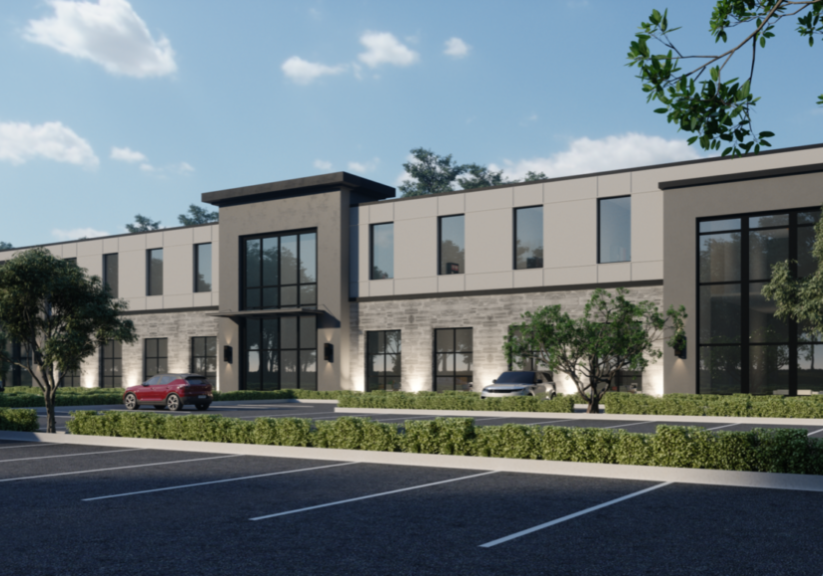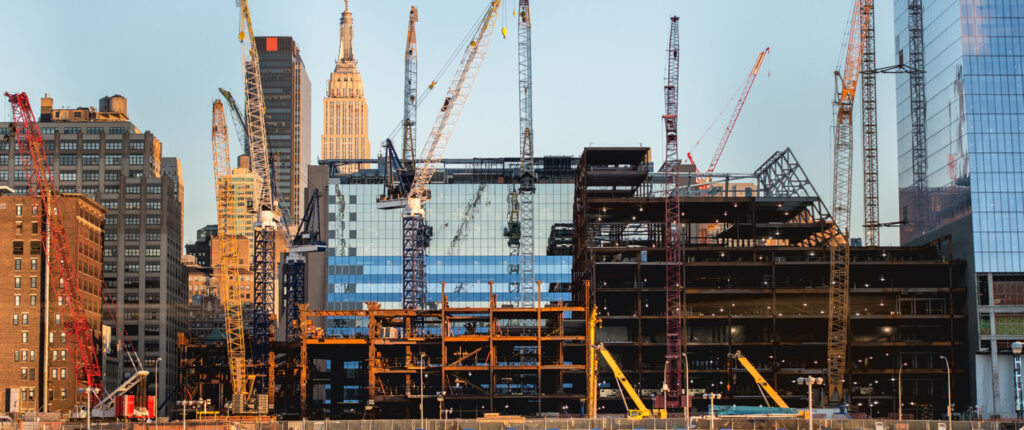
It can be challenging to determine if a buildout of an existing space or ground-up construction is the right choice for your healthcare facility. While both offer advantages and disadvantages, understanding the differences between these two methods of healthcare construction can help physicians and healthcare organizations make informed decisions.
In this article, we explore the various costs associated with ground-up construction and medical office build outs and compare the benefits each method offers. With this information, you can confidently decide which construction option suits your organization’s needs.
WHAT IS GROUND-UP CONSTRUCTION?
Ground-up construction is one of the most common methods of building a healthcare facility, and it involves creating a new structure from scratch. This approach offers the advantage of total control over the building’s specifications, design, materials, and layout. Because everything is designed specifically for your purposes, this method allows you to create a perfectly tailored environment to maximize efficiency and patient care. Additionally, ground-up construction allows you to use state-of-the-art technology and materials that may not be available when adding to an existing structure.
WHAT IS A BUILDOUT?
A buildout is an approach to healthcare construction in which an existing structure is reenvisioned to create a better medical office or other types of healthcare facility. Buildouts have become increasingly popular as a cost-effective way to develop medical offices, clinics, and hospitals. Care center, clinic, and medical office buildout costs are typically lower than ground-up construction because much of the necessary infrastructure is already in place and only needs to be updated or upgraded. In addition, buildouts usually allow for faster completion times because much of the work is being done on an existing structure.
COMPARING THE GROUND-UP AND BUILDOUT HEALTHCARE CONSTRUCTION METHODS
While they serve the same ultimate goal of providing a safe, comfortable environment for patients and medical staff, the buildout and ground-up approaches have unique benefits and drawbacks. Let’s compare the advantages and disadvantages of these two healthcare construction methods to help you determine which is best for your project.
Costs and Timeframe
Ground-up construction typically requires more time than a buildout because it involves the entire process of building from scratch. This includes obtaining permits, purchasing materials and equipment, hiring contractors or architects, etc. However, the cost of ground-up construction can be less expensive in the long run if you can design a space that meets your needs ideally instead of having to retrofit an existing space.
Buildouts may take less time than ground-up construction because it involves reimagining an existing space rather than building from scratch. However, care facility and medical office buildout costs can be higher than ground-up construction if you need additional materials and equipment to modify the existing space or if hidden issues present themselves once construction begins.
Permitting Process
The permitting process for ground-up construction is often more complicated than a buildout since it requires approval from local authorities for all aspects of the new building. This includes the architecture, wiring, plumbing plans, environmental impact considerations, and many other factors. The time required to obtain these permits can vary depending on local regulations and the project’s complexity.
Buildouts generally require fewer permits since they are limited to renovating or expanding an existing structure. However, depending on the project’s scope, some licenses may still be necessary to meet all safety and health requirements.
Customization
Ground-up construction allows for more customization options for medical office spaces. The size and layout of your care center, veterinary clinic, or medical office can be tailored to meet the specific needs of each organization, as well as any other features or amenities. Since ground-up construction typically involves starting from scratch, it also provides a blank canvas for architects and designers to work with when creating a unique space.
On the other hand, buildouts are more limited in terms of customization since they are based on existing structures and often require reworking rather than entirely new builds. While buildouts can still be customized, especially the interior, they may not offer the same freedom as ground-up construction.

CHOOSING BETWEEN BUILDOUTS AND GROUND-UP CONSTRUCTION
Choosing between starting a ground-up or buildout healthcare construction project can be a daunting task, but understanding the differences and considerations for each option can make the decision easier. Both types of projects involve significant planning, budgeting, and resources, so it’s crucial to weigh the pros and cons of each before committing to one.
Ultimately, there is no right or wrong method. The effectiveness of a buildout or ground-up construction project is highly dependent on your practice’s budget, time restraints, daily operations, and many other factors.
THINGS TO CONSIDER WHEN CHOOSING A FIRM FOR HEALTHCARE CONSTRUCTION PROJECTS:
Whether you choose buildout or ground-up construction as your project delivery method, you need to select a partner to provide services and guidance. When constructing a medical center, you should consider the following about the general contractor, design-build firm, or construction partner you’re interested in:
- Expertise in ground-up construction, medical office buildouts, and other healthcare facility projects
- Ability to provide accurate cost estimates and control costs throughout the project
- Experience working with local authorities to obtain necessary permits throughout the construction process
- Knowledge of relevant health and safety regulations
- Proven record of successful completion of similar projects
- Commitment to quality craftsmanship and attention to detail
- Adequate resources, such as staff, materials, subcontractors, and equipment
- Clear communication regarding timelines, scope changes, and any other relevant updates
- Flexibility to accommodate schedule changes or unexpected issues that may arise
- Respect for patient privacy and adherence to HIPAA guidelines
- Dedication to sustainability practices wherever possible.
TURN TO APEX DESIGN BUILD FOR ALL YOUR HEALTHCARE CONSTRUCTION NEEDS
For over 70 years, Apex has supported the healthcare industry with comprehensive buildout and ground-up construction services. The cost to build a new facility may be prohibitive, and a buildout might not deliver exactly what you need to improve patient care. We work with you to determine the best solution and control facility and medical office buildout costs or new construction investments.
Reach out to Apex today to discuss your ideas for a new or improved healthcare facility.
